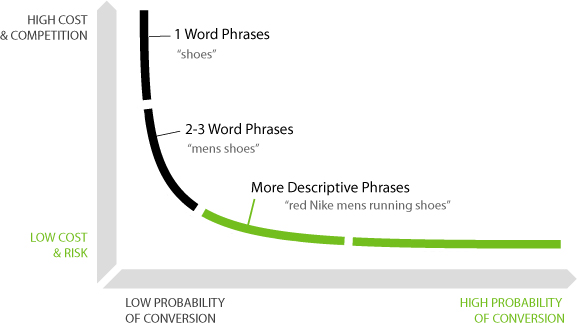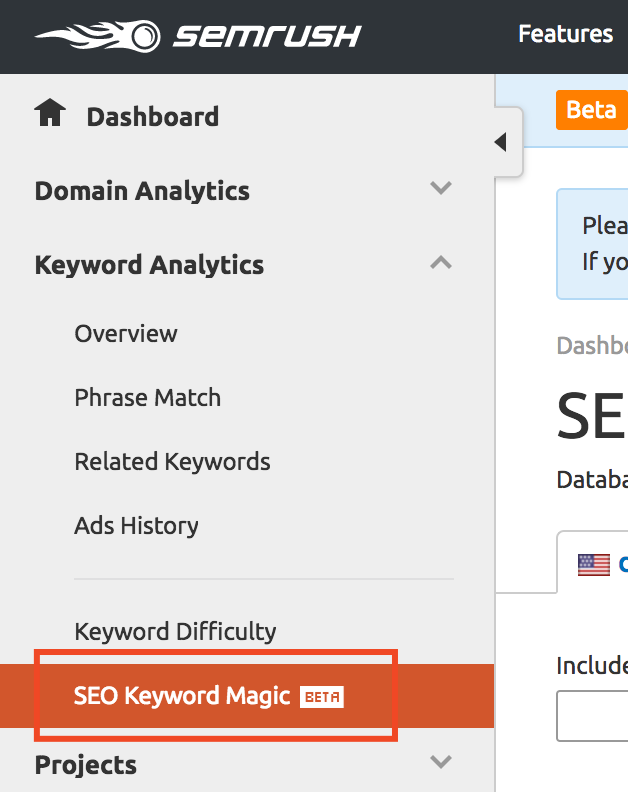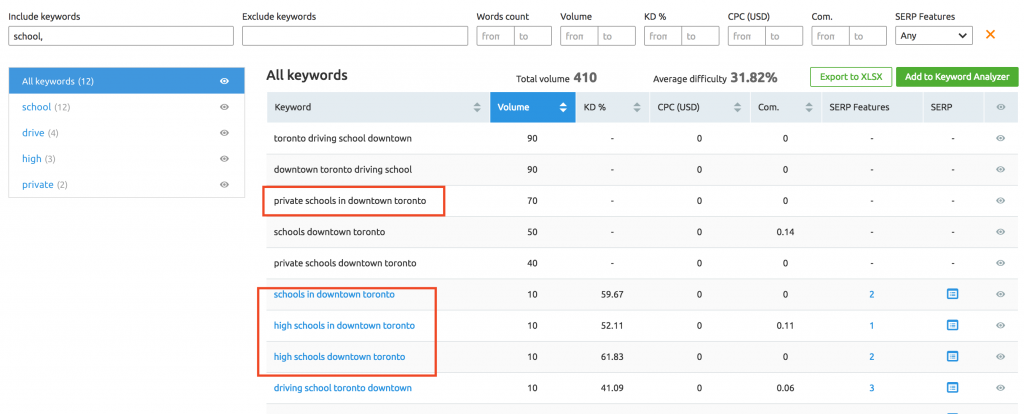Local SEO is extremely important for real estate agents to get more referrals, leads, and exposure for themselves, and in this blog post, we’re going to help you write the perfect blog that will rank higher in search engines.
Now, before you go through this post we highly recommend that you check out our guide on improving local SEO because we will be using some of the concepts mentioned there throughout this article.
Why Real Estate Professionals NEED to Create Local Content
The broader answer is, “content is king”. This is a phrase marketers have been using for a very long time ever since SEO and search rankings came into existence.
When you create local content you are not only writing about your neighborhood but you are also creating niche articles that will rank high for long-tail local keyword searches.
Example Content Topics
- Top 4 Late Night Sandwiches In Leslieville Toronto
- 4 Best Places To Go Bowling In East Austin
3 Types of SEO-Friendly Content Topics
Even before you select a specific topic for your blog posts you need to divide your real estate content marketing strategy into 3 categories.
- Value Content – Blog posts and articles that bring value to the website visitor. The purpose of these types of articles is to aggregate valuable local information as well as unique things to know about your community. Example: 5 Things To Do In Kitsilano Vancouver
 Pillar Content – These are 1500-2000+ word descriptive articles that establish your website as an authority in your local area. Pillar content will eventually bring a lot of organic traffic from a wide array of long-tail keyword searches. Example: Liberty Village Complete Neighbourhood Guide
Pillar Content – These are 1500-2000+ word descriptive articles that establish your website as an authority in your local area. Pillar content will eventually bring a lot of organic traffic from a wide array of long-tail keyword searches. Example: Liberty Village Complete Neighbourhood Guide
Niche Keyword Focused Content – A smart content marketing plan involves blog posts that are written with the sole intent of generating more traffic to your website. Although value and pillar content will generate traffic, keyword focussed blog posts should exist to fill in the gaps to target just a specific set of keywords in your local area. Example: 5 Awesome Lakeside Detached Homes in Oakville
Once you start showing up for multiple long-tail keywords for a bunch of blog posts, people in your area will discover your brand more and more.
How To Do Keyword Research For Your Area
Now that you have an idea of the type of content that you should write on your blog, it’s time to show you how you can research keywords for blog post ideas.
Tools For Keyword Research
- Google Keyword Planner (free)
- SEM Rush (the tool that we personally use for our website keyword research)
For the step-by-step guide here we will use SEMRush as a reference to research a bunch of keywords and come up with content topic ideas.
Example Area to Target: Downtown Toronto
Step 1: Keyword Research
Go to SEMRush and open the SEO Keyword Magic Tool under the Keyword Analytics tab.

Step 2: Enter Your Keyword
Now enter the keyword “downtown Toronto” under a new keywords tab. You will see a list of suggested keywords with their monthly searches and KD% (keyword difficulty percentage).
The two key metrics to look at are the monthly keyword searches for the particular keyword as well as the keyword difficulty percentage. The higher the keyword difficulty percentage, the harder it is to rank for that particular keyword on the top 3 positions.
Step 3: Go More Niche To Find Low Competitive Keywords
Obviously, a general “downtown Toronto” search yields a list of super competitive keywords that are almost impossible to rank for.
Your only option is to keep searching for topics related to downtown Toronto but with lower competition.
On the left-hand column of the keyword research tool, we have a bunch of suggestions. You can click on each suggestion to find more related keywords.

Additionally, after typing in your keyword use the filters to find all keywords with a keyword difficult rank of 0 to 60.
Finally, search for a 3-4 phrase keyword related to downtown Toronto like “Downtown Toronto schools”.
Take a look at the keywords now. These are the type of long-tail keywords that you should target. Small but really specific keyword search volumes. The keyword difficulty is not that competitive either.
Now that you have this whole data in your fingertip, a good article topic would be: Best Schools in Downtown Toronto
10 Tips and Tricks For Improving An On-Page SEO Blog Post
In this section we will talk about some of the on-page optimization guidelines that you should follow:
- The heading of your post should always be an H1 tag.
- Structure your post to have an introduction, main points, sub-points, and a definite conclusion
- The sub-headings should be H2 tags and if you are breaking down the blog post into more segments use H3 tags for additional headings.
- Do not use more than 300-400 words after a heading. This hampers readability and is considered a signal for search engine ranking.
- Use bullet points and useful outbound links wherever applicable.
- Internal linking of content is always helpful in improving the overall SEO of your website as well as the blog post.
- Use relevant pictures and embedded videos that help explain your post better.
- The permalink or the blog post URL should include the target keywords.
- The blog post title should include the target keyword.
- The Headings inside your post must contain the target keyword. Do not overdo it but make sure that the headings look natural.
Note: When you follow these tips mentioned above, your post will rank a lot better. However, the key to a good SEO-optimized article is always the content. Without useful content, you may have the best-optimized page but it won’t really amount to any new business. In the next section, we will explain why?
Why Should a Real Estate Professional Blog?
 A real estate professional’s goal is to get new leads, prospects, and referrals in their target market so that they can generate new business. This is the ultimate objective of every real estate agent/broker.
A real estate professional’s goal is to get new leads, prospects, and referrals in their target market so that they can generate new business. This is the ultimate objective of every real estate agent/broker.
So why invest your time doing keyword research and write useful content on your blog page?
The answer to this question is a one-letter word – VALUE.
People in your target market need to trust you before they can do business with you. The easiest way of building trust with people who you have never met before is to provide valuable content that helps their home buying and decision-making process.
For Example: when you are writing about the top schools or best pubs in your neighborhood what you are really doing is creating content that potential home buyers are likely to search for if they are planning on moving to your area.
This type of value-based marketing is also called “inbound marketing”. While inbound marketing takes a long time to return you a positive ROI compared to lead generation…the payout, in the end, can be huge.
Hubspot (a marketing SaaS company) grew their startup to over $500M+ valuation using just inbound marketing and establishing themselves as the go-to place to learn about all things marketing.
3 Things To Do After You Publish Your Blog Post
Now that you have done your keyword research and actually published a nice post, it’s time to make sure that you distribute your content so that more people discover your article online.
Content distribution is really important especially if you are targeting a slightly difficult keyword. The more social shares your content receives the better the chances for your blog post to rank higher on search engines.
Here are 3 things to do after publishing your blog post:
- Post your content on as many social media sites as possible. Post on your Facebook Page, Twitter profile, LinkedIn, Medium.com.
- Re-write and Re-Purpose your content on Medium.com. Don’t know what Medium.com is? That’s ok. It’s free. Just go there now. Create an account. And after you blog on your site, write a summary of your blog on medium.com with a link to read more on your website.
- Post on other content syndication websites like scoop.it, different LinkedIn groups, local content syndication sites, local Reddit streams, StumbleUpon, etc. to maximize distribution. Content syndication and distribution is a great source for generating backlinks to your blog posts. The more backlinks you can generate the better your article will perform in terms of SEO.






